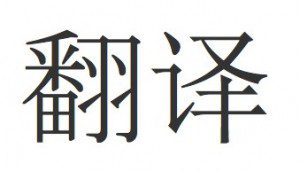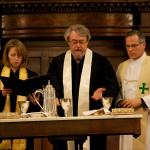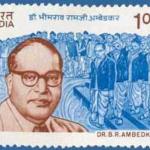 These two characters, read fān
These two characters, read fān
The first means to “flip over,” “upset,” or “capsize.” The second is to “decode.” Together, they’re usually translated as “translate.” In this post, I’ll offer some thoughts about this business of flipping over and decoding Chinese characters for Zen translations and give an example of the implications of this work.
In an email conversation with a well-known Buddhist scholar, the scholar mentioned that the person who has done the most to translate Buddhist texts that form the basis for our dharma literature, tends to get it about 85% correct.
That might not seem too bad, a solid “B,” but when a whole religion, peoples’ practices, and teachers’ teachings, are based (in part) on something that’s 85% correct, well, we have a problem here. Now, of course, there is zazen and direct experience – but here I’m just talking about the dharma literature that’s been translated into English and used for various purposes, including inspiring and guiding the practice and experience.
Touched by the suspicion that the aforementioned scholar is correct and having a long-time interest in the Chinese language, I’ve been working with a student at translating the original Chinese koans into a version of English that is explicitly directed for practitioners, and particularly for those engaged in studying or teaching koan.
And although I have concerns about various translations, I also want to acknowledge that we now have several sound English translations of many of the core teachings, including the various koan collections. In our translation work, we consult these and sometimes depend on them for aspects beyond our knowledge and skill. Seeing how others have solved various knotty translation problems is an important part of our process. For most issues there isn’t one right answer but a field of possibilities.
Another scholar that we sometimes consult, someone who is really trained in classical Chinese, often looks at what we’ve come up with and says, “Yes, it could be that way.”
So after being at it for a couple years, and more aware of the enormity of the task, I’d be delighted to find that we get 85% correct!
As is well known, the Chinese written language, and especially the ancient Ch’an texts, use words differently than does the English language. Relationships within sentences are often not spelled out in a definitive way and Chinese characters often have a wide range of meanings, wider than the usual English word. Both of these factors make translation a projective test – what you see in English is to a large extent based on the interaction between the Chinese and the translator (their cultural and personal backgrounds as well as their dharma understanding).
One passage that I’ve worked with, Rujing’s comment on the mu koan (coming soon to this blog), has about 65 characters in the original. One scholarly translation has over 100 words, mostly about specifying relationships and pinning down what is open to interpretation in the original. For our koan work, though, the possibility of thick and various interpretations is just the point, so narrowing the possibilities for play limits the utility of the text as awakening practice.
Therefore, in our translation work we try to stay as close to the original as possible (“bare-bones translation”), adding as few things into the text as we can get by with and still have a vague resemblance to the English language. And we remember, of course, that we’re working with a koan – so the koan point is vital – and that our readers are likely people with some fluency in the koan perspective.
For myself, I find that translating is a wonderfully rich activity, an art practice, that exercises a part of the brain reminiscent of Go (圍棋 or “encircling game”). The mind needs to rest in openness and let the solution (various meanings with unclear relationships) come together. In addition, working with a koan character-by-character opens up the koan in multiple directions.
I shared some of our work with the first above-mentioned scholar and he seemed to like what we’d done, at least, he didn’t insist that we give up the project immediately due to our hopeless ignorance. He did have some constructive feedback and thought that we were a bit course and literal – just what we were going for.
Now for a taste of what we’ve come up with. I’ve selected the verse from the first case of the Gateless Barrier for the mu koan. The first translation (lacking of a better way of putting it) is the Wild Fox rendition and the second is by Aitken Roshi, one of the standard translations.
Wumen’s Verse
(Wild Fox Version)
Dog! Buddha Nature!
The whole put forward, the exact imperative.
Only enter yes and no
lose self, lose life.
(Aitken Roshi Version)
Dog, Buddha nature—
the full presentation of the whole;
with a bit of “has” or “has not”
body is lost, life is lost.
The first line is the basically the same in both, so not much to bark about.
In the second line, it seems that Aitken Roshi left out a part or conflated it with the first phrase. “Full presentation of the whole” is there but nothing that seems to directly translate “exact imperative.” We’ve discovered that this is pretty common. Not only do translators often add elements, they also drop them. In this case, it doesn’t do much with the meaning, as the second phrase, “exact imperative,” mostly emphasizes the significance of “the whole put forward.”
The third line, though, is significantly different in these two versions: “With a bit of ‘has’ or ‘has not'” and “Only enter yes and no.” What we’re talking about here is the central issue in this koan – 有 “u” and 無 “mu” or “existence” and “absence.” “Has”/”yes” as well as “has not”/”no” are both legitimate ways of translating these characters.
Aitken Roshi’s “with a bit of” has added something to the verse that doesn’t show up in the characters and makes what follows – “losing self, losing life” – something that the verse seems to be suggesting we ought to avoid, as if there is some pure place or state of mind where there’s no yes and no! So these two lines in Aitken Roshi’s translation can be read as a moral injunction.
By the way, I don’t think that Aitken Roshi thought this (I have deep respect for the old teacher) – just that his translation is open to this (mis)interpretation of the mu koan.
Staying more closely to the characters, “Only enter yes and no/lose self, lose life” offers up a practice instruction – just one doing! Fully enter this one great life of yes and no, have and have not.
More to come on translations, so you’ve got that to look forward to, at least.












